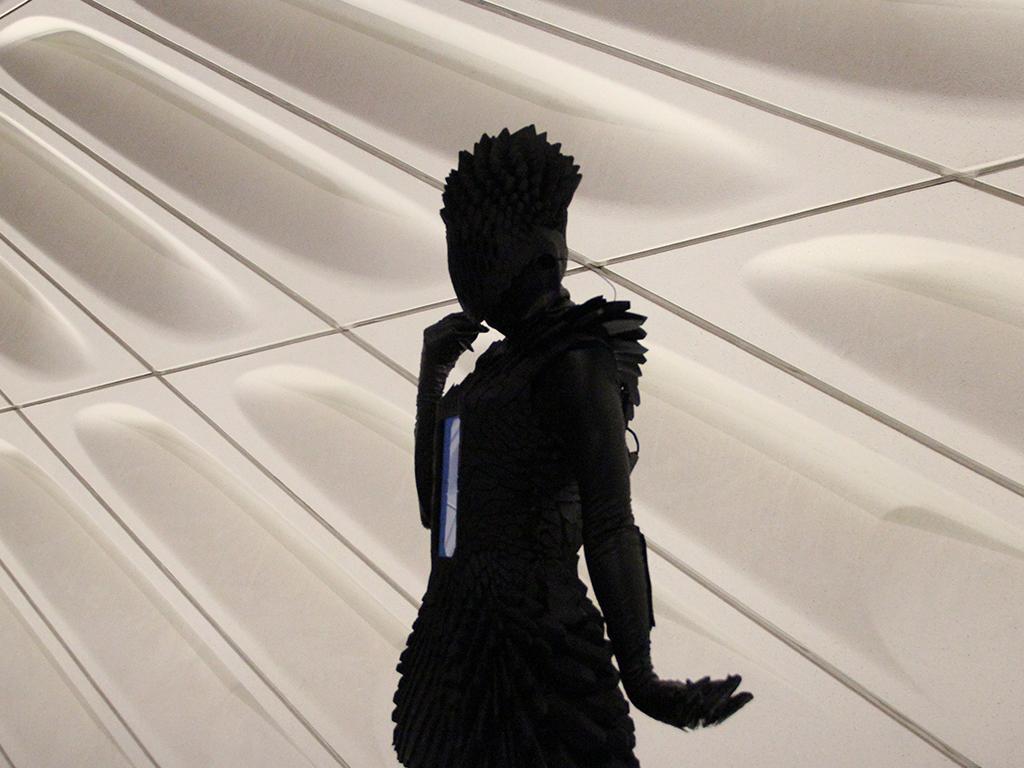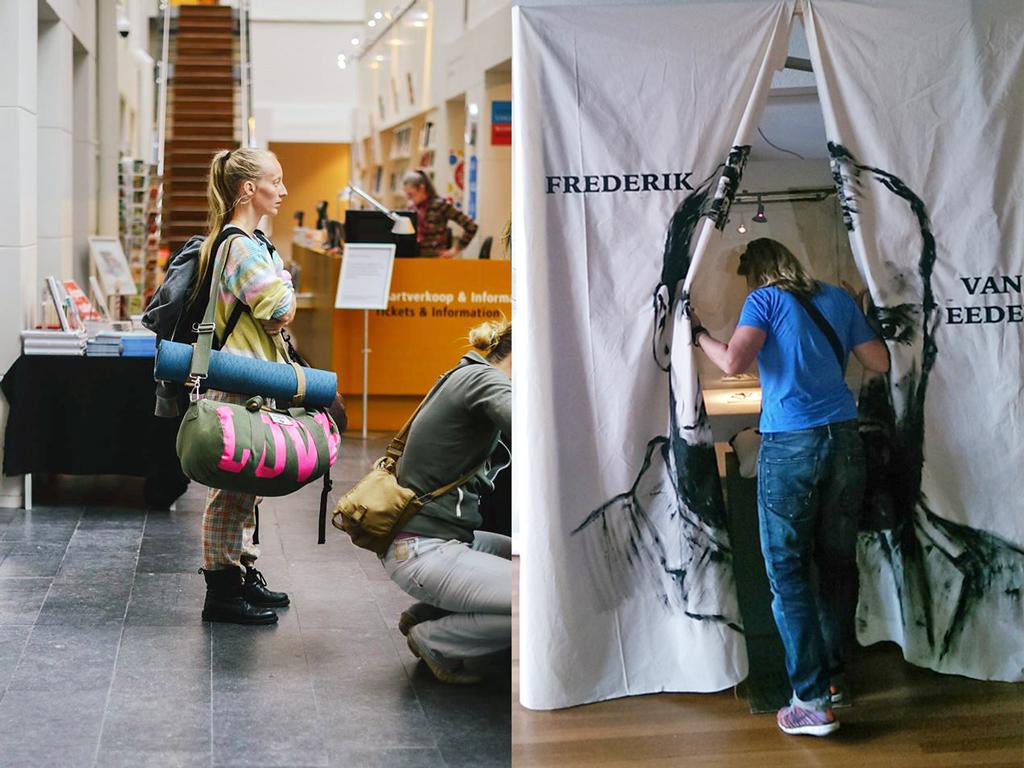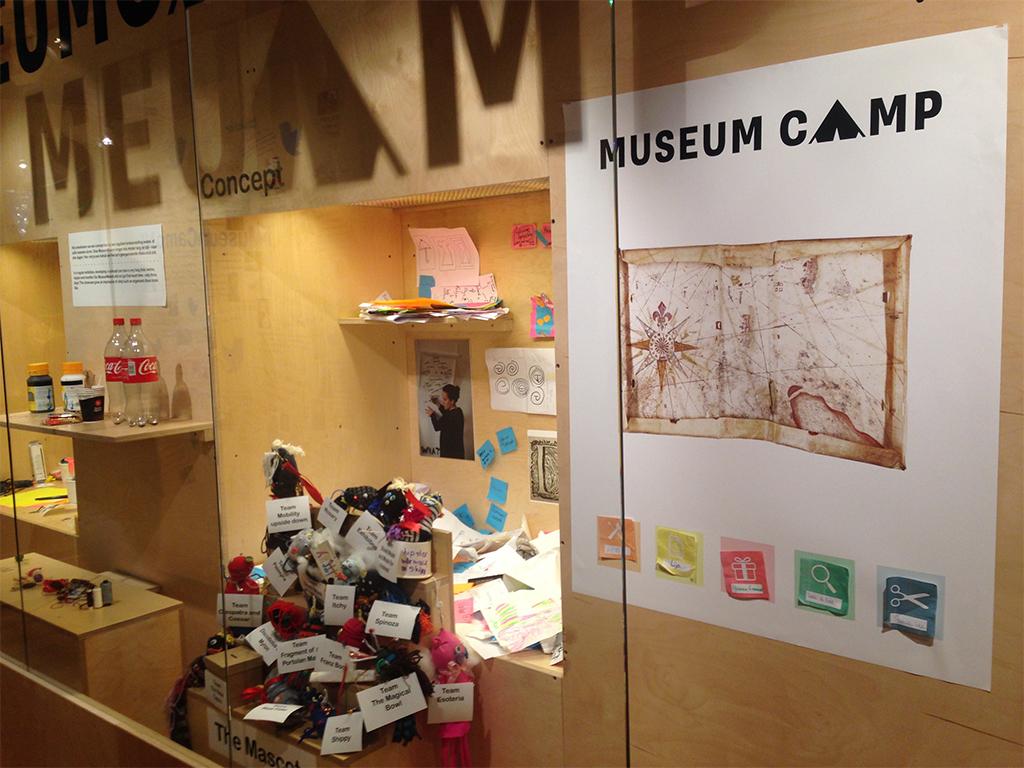Museums and the Web (MW) is one of the bigger international heritage conferences, and this year in its 20th edition. The 2016 edition was held in April in Los Angeles. The name obviously stems from the days when the web was the new ‘new thing’, but it covers the much broader field of digital technology and arts. In its opening reception at The Broad, artist Tiffany Trenda wore her 3D printed dress, later on she showed a dress with QR codes to link to websites containing information about related body parts.
I was there for the meSch project, where we demoed the work of the last three years, and two of my meSch colleagues presented two separate papers. In addition meSch had been nominated with two case studies for the conference GLAMi awards, but alas, we didn’t win, maybe the story of meSch is still a bit too layered and complex to instantly grab. We need to work on that ☺ (and congratulations to the winners).
I have presented at other MW editions before, and was always struck by the large Dutch heritage community present at the conference. This year however, I only counted four or five other Dutch organizations (among which were Sound and Vision, Rijksmuseum, Van Gogh Museum, UvA).
Topics in the program include a few ‘regulars’, such as metrics and analytics of digital tools, and user experience design and storytelling, but this year there is more attention for more current topics such as linked (open) data, and the right to access the collections we ourselves built as a collective. Or as Cory Doctorow stated in his MW opening keynote: "technology is designed to serve its users, not betray them". His talk focused for a large part on surveillance and data breaches. We need to be conscious of what data is being gathered and what potential risks there are of this data being leaked and misused: "Somewhere out there is a bored grad student with an electron-tunneling microphone who can figure out how to break the digital lock." How many museums are open about the data they gather about visitors? Can visitors opt out? Can they themselves access all the data that is being captured? His solution is to not collect data on people to personalise their experience; but to give people the tools to personalise their own experience. (And as a side note, I like to add, that is exactly the way we approach personalization in meSch).
Daniela Petrelli presented the paper on the meSch case studies, called "Do it together: The effect of curators, designers, and technologists sharing the making of new interactive visitors’ experiences” . In her talk she zoomed in on the evocative experience the meSch team designed for the trenches in the Italian Alps (Museo della Guerra). The design effort was on both the creation of bespoke devices and the composition of content that was not didactic but open to personal interpretation: curators of the museum left traces for visitors to pick up, as this would make their experience deeper and stronger.
Areti Damala presented the paper on the evaluation approach and results of meSch: "Evaluating tangible and multisensory museum visiting experiences: Lessons learned from the meSch project”. Measuring the impact of new technologies is one of the main challenges identified in the 2015 NMC Horizon report (Museum Edition). Taking as an example the case-studies of Museon and Allard Pierson Museum in the Netherlands, Areti gave an overview of how we documented, analysed, and interpreted the impact of digitally enhanced, tangible, embodied, and multisensory visitor experiences within meSch.
The two presentations were followed by a public demo at the conference hotel. Demoing on a location where main factors such as access to the wifi are out of your control is always challenging. And of course the bandwidth went significantly down when some 400 participants entered the demo space, with their devices on, scanning the room for free wifi and Bluetooth connections. But with the videos of the case studies, the handsomely designed toolkit and smart replicas, brand new flyers and our enthusiasm, we managed to get the meSch story across. Which garnered a lot of positive feedback from the conference participants. And gave us clear insights in the steps we need to take towards the upcoming public presentations at the meSch Authoring Feasts, in which we invite curators to work intensively with the kit, and the Museum+Heritage show 2016.
My MW2016 experience ended with the reception at the Natural History Museum of Los Angeles County taking a selfie with a dinosaur…

This project has received funding from the European Union’s Seventh Framework Programme for research, technological development and demonstration under grant agreement no. 600851.


